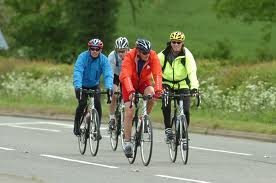Doctors urge indoor tanning ban for minors
U.S. tanning salons should close their doors to minors to protect them from skin cancer, a group of 60,000 pediatricians said Monday in a new policy statement.
With the move, the American Academy of Pediatrics joins the World Health Organization (WHO), the American Academy of Dermatology and other groups that are already pushing for a ban.
"There are more tanning facilities in the U.S. than there are Starbucks or McDonald's," said Dr. Sophie J. Balk, who helped write the new statement for the American Academy of Pediatrics. "More than a million visits are made every day."
Since 2009, the International Agency for Research on Cancer, a part of the WHO, has classified tanning beds as cancer-causing.
Research shows people who start going to tanning salons before age 35 have a 75-percent increase in their chances of developing melanoma, the deadliest type of skin cancer.
The actual numbers remain small, however. In one large Scandinavian study, 24 out of every 10,000 young women who tanned regularly developed melanoma compared to 17 out of every 10,000 who had never or only rarely used a tanning bed.
But ultraviolet light - whether artificial or from the sun -- also causes less dangerous types of skin cancer.
Read More
With the move, the American Academy of Pediatrics joins the World Health Organization (WHO), the American Academy of Dermatology and other groups that are already pushing for a ban.
"There are more tanning facilities in the U.S. than there are Starbucks or McDonald's," said Dr. Sophie J. Balk, who helped write the new statement for the American Academy of Pediatrics. "More than a million visits are made every day."
Since 2009, the International Agency for Research on Cancer, a part of the WHO, has classified tanning beds as cancer-causing.
Research shows people who start going to tanning salons before age 35 have a 75-percent increase in their chances of developing melanoma, the deadliest type of skin cancer.
The actual numbers remain small, however. In one large Scandinavian study, 24 out of every 10,000 young women who tanned regularly developed melanoma compared to 17 out of every 10,000 who had never or only rarely used a tanning bed.
But ultraviolet light - whether artificial or from the sun -- also causes less dangerous types of skin cancer.
Read More














